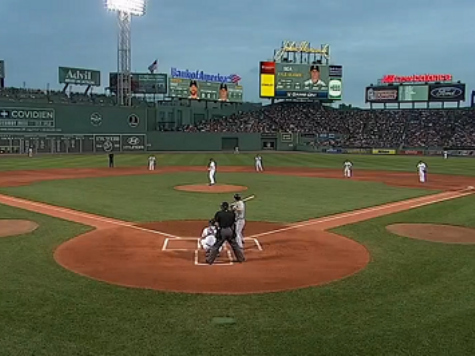The shift used to be for David Ortiz. Now it’s for just about anyone.
The New York Times covers the shift in the philosophy toward the shift. A strategy once aimed at neutralizing pull hitters, the infield shift now diminishes the offensive outputs of entire starting lineups. With third basemen playing shortstop, infielders in the outfield, or an unoccupied gap between the first baseman and second base, explaining the fielding positions to a youngster while watching a Major League Baseball game now poses a challenge. MLB defenses seemingly take on the complexity of NFL offenses.
Baseball Info Solutions reports a gradual increase in the shift since 2010. The increase appears on pace to move from gradual to dramatic this season. “Last year there were 8,134 shifts on balls in play,” the Times reports. “Through the weekend, teams had already shifted 3,213 times, putting them on pace for nearly 14,000 for the season. Teams that shift regularly are lowering opposing teams’ batting averages by 30 to 40 points on grounders and low line drives.”
Last year, the Baltimore Orioles employed the infield shift 470 times on balls put in play. Joe Maddon, who has served as a champion of the strategy, put his Tampa Bay Rays in the shift on 466 balls put in play. The Brewers, Pirates, and Astros also used the shift on more than 400 balls in play. The Padres, White Sox, Cardinals, Twins, Dodgers, Phillies, and Nationals all went into the shift on fewer than 100 balls put in play.
Two pastimes of the national pastime clash in the shift’s move from quirky to mainstream. Tradition demands infielders to play the game as their fathers and grandfathers had played it. Statistics demand that they evolve to embrace the shift.
After peaking at .271 in 1999, the two leagues now average .251. Drug testing plays as a major reason for this. But the infield shift’s rise can be seen as an ingredient in the formula for lower production from the hitters. Yankee first baseman Mark Teixiera, whose batting average has dropped precipitously since teams started employing the shift on him regularly, tells the Times of the defensive strategy: “You do it because it works.”
But what will work against it? Opportunistic stolen bases, a casualty of Moneyball, can keep fielders honest in their positioning. Well-rounded hitters who can hit to all fields, a la Wade Boggs, can turn a defensive asset into a liability. So can the bunt, strangely slandered as an anachronism in a game that plays as one. “[M]ake no mistake about it: The bunt is still out of place in today’s game,” Bleacher Report‘s Zachary Rymer maintained last year. “There’s a time and a place for a good bunt, but it’s a dated play that is still used more often than it should be.”
When players learn how to bunt again, the statement might then be applied instead to the shift. Until then, and until batters hit to all fields more effectively, third basemen will continue to play closer to second base, in shallow left field, and anywhere else their manager tells them to. When hitters use the whole field, fielders will patrol more than half of it.

COMMENTS
Please let us know if you're having issues with commenting.